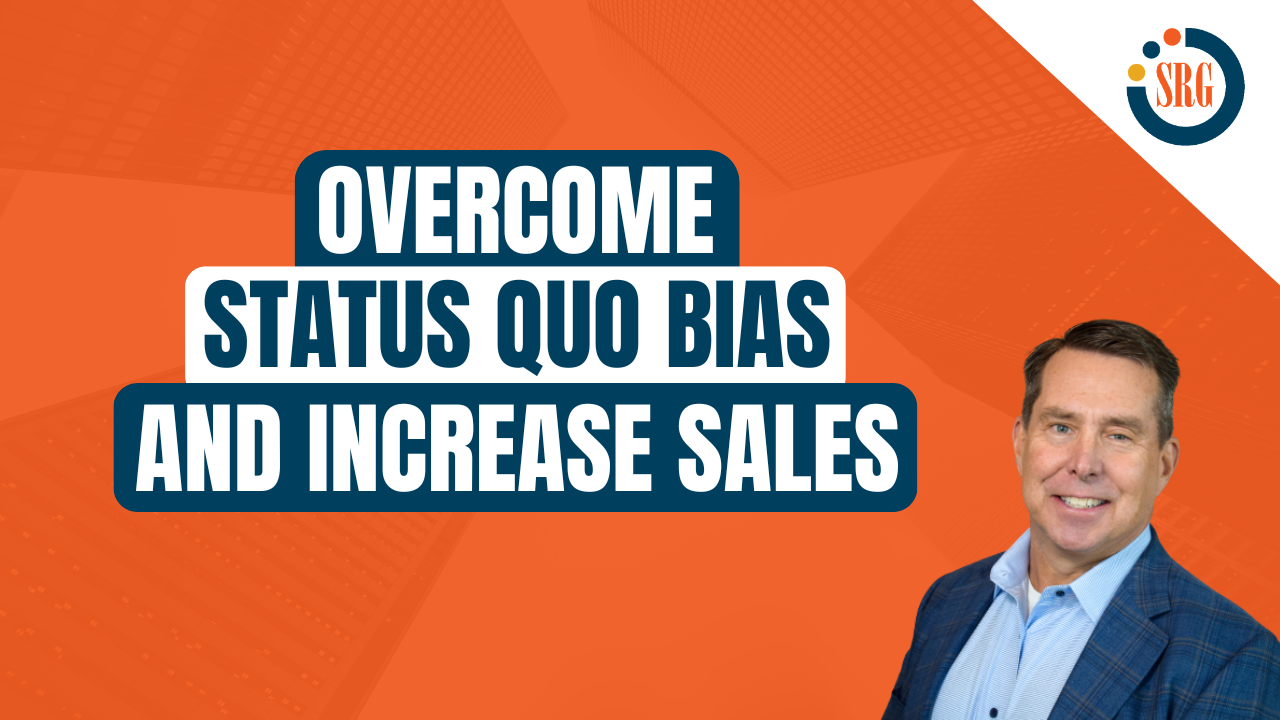Research estimates that about 40% of all sales opportunities end with no decision. The harsh reality of this statistic is that sales professionals could be wasting up to 40% of their time chasing deals that don’t go anywhere. They are essentially pursuing deals where the business need isn’t clear or compelling enough, or there’s not enough urgency for the customer to act. When a customer decides not to do anything to address their current situation, they are maintaining the status quo.
Status quo bias is the term used in Psychology to explain why people resist change and prefer that everything stays the same. It’s the reason why so many people, when faced with making a big decision, tend to do nothing. They stick with what they know because it feels safer even though it may result in unpleasant consequences down the road.
Given the frequent occurrence of status quo bias, it’s important to recognize and prepare for this scenario. A cost of inaction analysis paired with industry case studies shows the problem from a different angle. Use these three strategies to shift the customer’s perspective and encourage them to take action.
#1 Use the Cost of Inaction to Sell Against the Status Quo
Creating a sense of urgency helps overcome the status quo resistance to change. A cost of inaction analysis quantifies the price of doing nothing. It creates more urgency around the problem by showing the customer that living with the status quo is actually costing them much more than they thought.
To determine the cost of inaction, ask questions to quantify the impact using a metric that makes the most sense for the business: How often does that happen? How significant is that when it happens? For example, what is the cost to retain a customer or get a new customer? Break it down into specifics for the loss of sales, hiring costs, productivity, customer churn, etc. When you add that up over time there can be significant cost implications to not fixing the problem.
While it may take some investigating, analyzing the cost of inaction can be worthwhile. It shows that while there’s a cost to fix the problem, there’s also a cost to keep the status quo. And it shows the problem in a way the customer might not have considered before.
#2 Enhance Your Power of Persuasion with Case Studies
Case studies are the proof point that demonstrates the value of your solution. Especially if they show how others in a similar industry have experienced comparable issues that your solution successfully addressed.
Use real-life stories and examples whenever possible to highlight how you helped other organizations with a similar problem. Creating a library of case studies in advance can be beneficial to provide during relevant conversations, as they add persuasive power to your sales discussions.
Combining case studies along with the cost of inaction data goes beyond the theoretical or hypothetical scenarios for a more persuasive business case that helps overcome objections.
#3 Disrupt the Status Quo Mindset to Make the Most of Your Time
Understanding the status quo mindset is the first step to overcoming the do-nothing sales scenario. While it may take some time to create the cost of inaction analysis and case studies; the payoff is improving your win rates. Plus, you can rest assured that you or your team are not wasting 40% of their time chasing deals that will never close.
In Summary
It's important to realize that sales deals are often hampered by the status quo bias. However, by using cost-of-inaction data, case studies, and understanding the status quo mindset, sales professionals can disrupt the status quo and make more efficient use of their time. Strategic use of this information can help close more deals and improve a company's bottom line.
Are you tired of your sales team facing obstacles in their process? Look no further!
The Sales Readiness Group is here to help. Our expert facilitators collaborate closely with your sellers to identify and conquer any resistance to change, delving into the underlying issues and providing solutions to help your team succeed. Imagine what your team could achieve with the right guidance and skills. Don't wait; let SRG help your team reach its goals. Schedule a complimentary consultation today.


